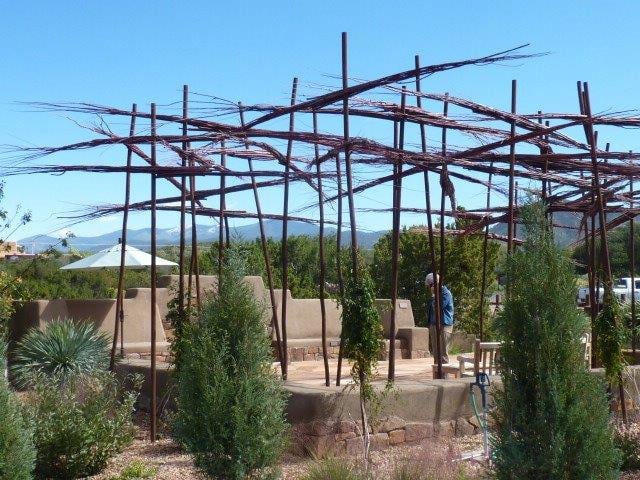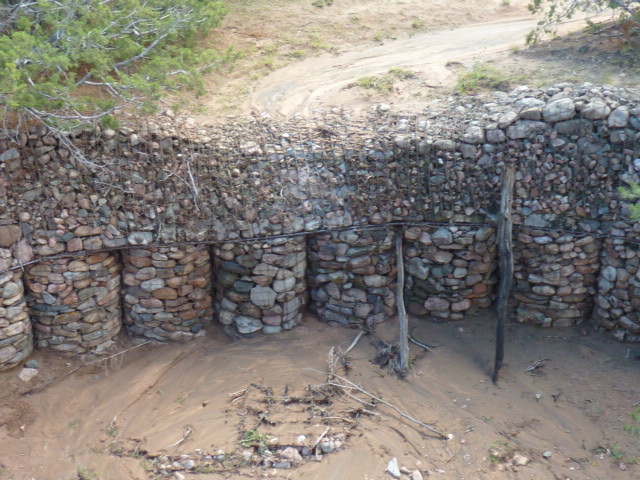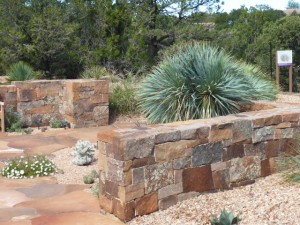
It’s not every day, nor is it everywhere that a brand new botanic garden opens, but the city of Santa Fe New Mexico recently became home to one. Although the garden opened its gates just this past July, only two months later in September when I visited the gardens looked remarkably filled in.

The Santa Fe Botanical Garden is located at the top of Museum Hill, near some of the city’s other cultural gems, including the Museum of Folk Art, and the Museum of Indian Arts and Culture. The new 1.5 acre garden is just the first part of a larger plan for the twelve acre site and brings to life many years of planning.
The garden was designed by New York designer W. Gary Smith, who first visited Santa Fe seven years ago, and it draws upon a palette rich in southwest native plants. This past summer’s rainfall unusually abundant for the region was harnessed by the garden’s water catchment systems, just one aspect of its environmentally conscious design.

The Ramada or “welcome” area leads visitors to a sculpture garden, a meadow garden, and an orchard garden—all newly planted and thriving. The Rambla is a manmade stone “stream bed” designed to slow movement of rain water performing a key role in storm water management, erosion prevention and encouraging groundwater recharge.
The Arroyo de Los Pinos is a preservation area work in progress. Evidence of the history of erosion along the banks of the stream is juxtaposed with a variety of conservation techniques the most notable of which is the row of extra large Gabion Baskets constructed by the Civilian Conservation Corps in the 1930’s. The garden was fortunate to locate a passionate collector of antique bridges who purchased a handsome bridge that fords the stream. The 62 foot long, 16 foot wide free span steel subdivided Warren Pony truss bridge had originally been installed along the Santa Fe trail, south of Las Vegas, New Mexico in 1918.


There are no apparent plans for a greenhouse in the near future the next phase of the garden’s development promises an ethno-botanical emphasis, with areas for demonstration of traditional dyes and medicinal use of plants. Well designed signage throughout the current garden invites visitors to focus on topics such as “ A Changing Climate is Changing Plants,” encouraging awareness of how climate change will transform the conditions in which we garden, regardless of location. With inspiring xeriscape plantings, and thought provoking programming, this new botanic garden is well worth a visit.


